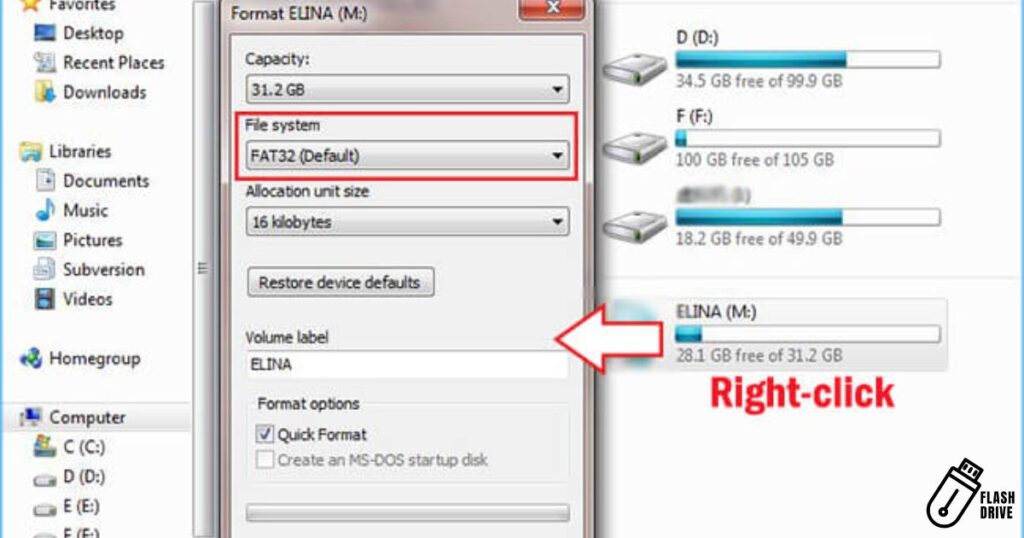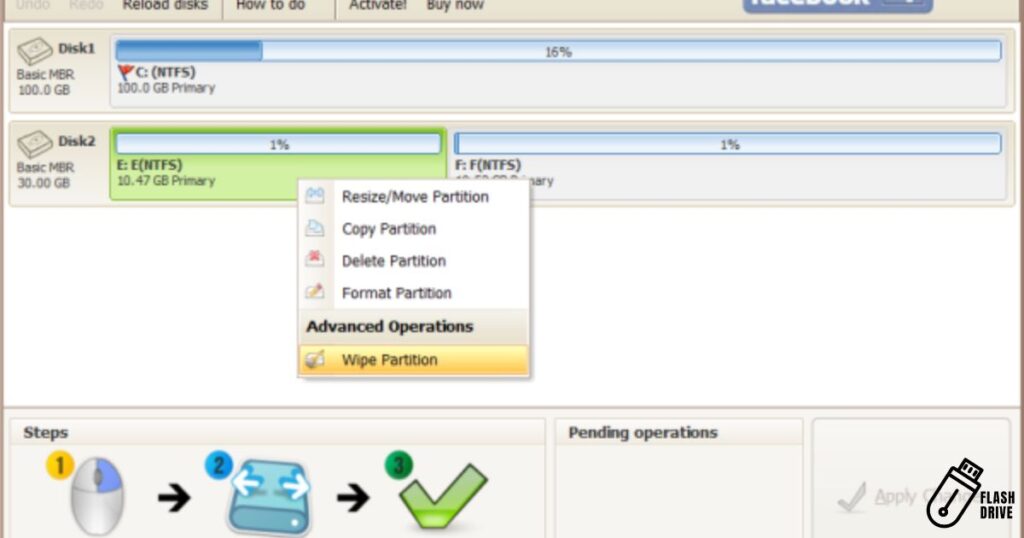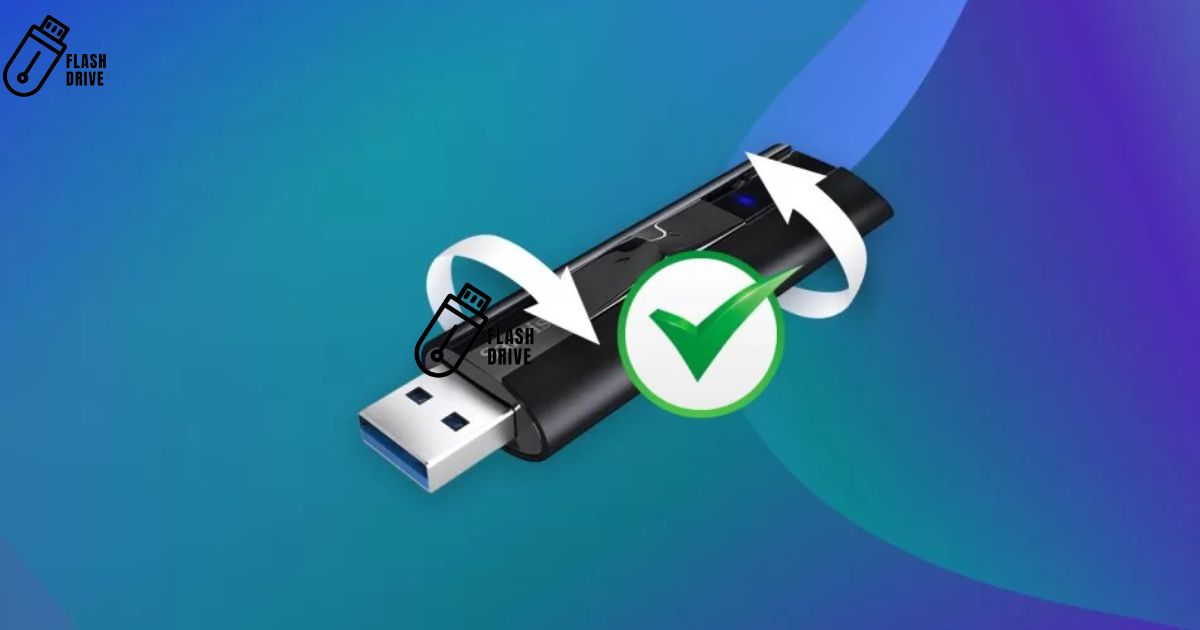To permanently destroy data on a flash drive, use secure erasure methods like overwriting the information with random data. This ensures that the original content becomes unrecoverable. Specialized software or tools can facilitate this process for effective data protection.
the secrets of destroying data on a flash drive forever with our simple guide. Ready to bid farewell to old files? Learn the art of secure data destruction in just a few clicks. Ensuring your sensitive information stays vanished without a trace. Say goodbye to worries, and embrace digital tranquillity.
To permanently destroy data on a flash drive, use specialized software like ‘DBAN’ or ‘CCleaner’ to overwrite the existing information with random data multiple times. Remember to exercise caution and ensure proper disposal methods to protect both data security and the environment.
Want to delete everything on a USB flash drive
If you are looking to destroy data on a USB flash drive permanently, a few straightforward methods can help ensure your information is completely wiped. Utilizing the built-in format option, open File Explorer, right-click on the USB drive, and choose “Format.”
Opt for a full format to overwrite the entire drive securely. Alternatively, you can use the Disk Part command line tool for a more precise approach. Access it through Command Prompt, select the correct drive, and execute commands like “clean” and “format” to wipe the data.
Another option is to employ third-party tools like Ease US Partition Master, providing advanced features for thorough data destruction. Whether you choose the in-built format, Disk Part, or a third-party tool, the focus is on ensuring that you destroy data on a flash drive permanently.
How to delete everything on a USB flash drive?

To permanently destroy data on a USB flash drive permanently, follow these steps. First, insert the USB drive into your computer. Next, right-click on the drive and select “Format.” Opt for a full format, ensuring it overwrites all data.
For a more secure method, open Command Prompt or PowerShell as an administrator and use the “diskpart” command to clean and format the drive. Alternatively, consider using a third-party tool like EaseUS Partition Master for advanced wiping options. Repeat these steps to destroy data on the flash drive permanently.
Keep in mind that these actions are irreversible, so ensure you’ve backed up any essential data before proceeding. Destroy Data on a Flash Drive Permanently. Destroy Data on a Flash Drive Permanently. Destroy Data on a Flash Drive Permanently.
Delete all files on a flash drive via formatting to get free space
To free up space on a flash drive, you can easily delete all files by formatting it. This process not only clears the drive but also permanently destroys data. By choosing the format option, you ensure that sensitive information is unrecoverable, making the flash drive ready for new data storage. To efficiently manage space and maintain data security, consider using the format function to destroy data on a flash drive permanently.
Delete files on flash drive totally via wiping
- Wiping Process: Achieve a total file deletion on a flash drive through a thorough wiping process.
- Data Destruction: Prioritize data security by opting for wiping to destroy data on a flash drive permanently.
- Increased Privacy: Ensure heightened privacy as wiping goes beyond simple deletion, making recovery nearly impossible.
- Sensitive Information: Ideal for removing sensitive information, wiping offers a comprehensive solution for secure file disposal.
- File Erasure: Wiping guarantees the complete erasure of files, leaving no trace of the data on the flash drive.
- Irreversible Method: Embrace an irreversible method to delete files, enhancing the permanence of data destruction.
- Protect Against Recovery: Guard against potential recovery attempts, safeguarding your flash drive from unauthorized access.
- Optimal Disk Cleaning: Choose wiping for optimal disk cleaning, creating space without compromising on data security.
- Data Integrity: Preserve data integrity by adopting wiping as a reliable means to eliminate files from the flash drive.
- User-Controlled: With wiping, users have control over the process, ensuring a deliberate and secure method to destroy data on a flash drive permanently.
When Would You Need to Wipe a USB Drive?
When concerns arise about the security of personal or sensitive information stored on a flash drive, it becomes crucial to consider the option to destroy data on a flash drive permanently. This need often arises when one plans to sell or transfer ownership of the USB drive to ensure that no trace of confidential data remains accessible.
Additionally, in scenarios where a flash drive is infected with persistent viruses or malware, a permanent wipe becomes essential to eliminate the threat. Data wiping is also warranted when facing corruption or file system issues that conventional formatting cannot resolve.
Safeguarding privacy and preventing unauthorized access are paramount reasons why individuals opt to destroy data on a flash drive permanently, using methods like secure formatting or specialized tools. Whether preparing to discard or repurpose the USB drive, ensuring the irreversible destruction of data guarantees peace of mind regarding data security and privacy.
How to Permanently Wipe USB Drive?

Permanently wiping data from a USB drive is crucial to safeguard sensitive information. To destroy data on a flash drive permanently, start by using the in-built format option: right-click on the USB drive in File Explorer, select “Format,” and choose a full format to overwrite the entire drive.
Alternatively, employ the DiskPart command line tool for a more secure process: open Command Prompt as an administrator, select the drive, and use the commands “clean” and “create partition primary.”
For added security, consider third-party tools like Ease US Partition Master, ensuring a thorough wipe. Whether you opt for the built-in options or external tools, the goal is to destroy data on a flash drive permanently, preventing any potential recovery of sensitive information.
Using In-built Format Option
It appears that you want information related to in-built format options for storage devices. However, please note that formatting a storage device is different from destroying data permanently. Formatting may not always result in data destruction it usually just removes the file system and makes the space available for new data.
If you are looking for a way to destroy data on a flash drive permanently? you might need to consider secure deletion methods or encryption rather than just formatting. Here’s a basic table about in-built format options.
| Format Option | Description |
| Quick Format | Fast option that erases the file system metadata |
| Full Format | Thorough option that checks for bad sectors |
| File System | Specifies the type of file system to be created |
| Allocation Unit | Determines the cluster size on the storage |
| Volume Label | Assigns a name to the storage volume |
Remember to be cautious when using format options, especially if your primary goal is to destroy data permanently. For secure data destruction, consider additional methods or tools specifically designed for that purpose.
Top of Form
Using the DiskPart Command Line Tool
- Access DiskPart: Open the Command Prompt and type “diskpart” to access the DiskPart utility.
- List Drives: Use the command “list disk” to view all available drives, identifying the flash drive.
- Select the Drive: Execute “select disk X” (replace X with the flash drive number) to choose the target drive.
- Clean Command: Type “clean” to remove all partitions and data on the selected drive.
- Create Partition: Use “create partition primary” to establish a new partition on the drive.
- Select Partition: Execute “select partition X” to choose the newly created partition.
- Format Partition: Format the partition with “format fs=ntfs” (or “format fs=fat32” if preferred).
- Assign a Drive Letter: Use “assign letter=X” to assign a drive letter to the partition.
- Exit DiskPart: Type “exit” to exit the DiskPart utility.
- Verification: Confirm the flash drive is formatted and, if necessary, repeat the process with random data to enhance data destruction.
Remember that while this process makes data recovery difficult, it might not guarantee absolute data destruction. For enhanced security, consider additional methods or specialized tools designed for permanent data destruction. Always exercise caution when using commands that involve data deletion.
Use a Third-party Tool – EaseUS Partition Master
Use a Third-party Tool like EaseUS Partition Master to efficiently destroy data on a flash drive permanently. This user-friendly software ensures the secure destruction of data by employing advanced algorithms. With EaseUS Partition Master, the process of wiping data on a flash drive permanently becomes straightforward.
The tool allows you to select the target drive and initiate a comprehensive data destruction process. By utilizing this third-party solution, you can guarantee that sensitive information on a flash drive is irreversibly removed. EaseUS Partition Master offers a reliable method to ensure data on a flash drive is permanently deleted, making it an ideal choice for safeguarding confidentiality.
This tool goes beyond traditional formatting, providing a robust solution for individuals seeking to obliterate data on a flash drive permanently. Consider EaseUS Partition Master when the need arises to destroy data on a flash drive completely. Utilizing this third-party tool ensures that the process of permanently destroy data from a flash drive is both efficient and secure.
Pros & cons
Prose
Security Boost: Permanently destroying data on a flash drive adds an extra layer of security, safeguarding sensitive information from unauthorized access.
Regulatory Compliance: Ensuring permanent data destruction aligns with privacy regulations, helping organizations adhere to legal standards and avoid penalties.
Cons
Data Recovery Challenges: Permanently destroying data on a flash drive may pose difficulties in ensuring absolute irreversibility, as advanced data recovery techniques could potentially retrieve traces of information.
Conclusion
Ensuring the permanent destruction of data on a flash drive is a critical consideration for maintaining data security and privacy. One effective method is to use specialized software tools designed for secure data erasure.
These tools typically overwrite the existing data on the flash drive with random patterns multiple times, making it extremely challenging for any potential recovery efforts. Examples include reputable data destruction applications like DBAN (Darik’s Boot and Nuke) or dedicated features within disk management tools, ensuring a comprehensive and irreversible obliteration of sensitive information.
Another approach to permanently destroy data on a flash drive involves physical destruction. While it might seem extreme, physically damaging the flash drive by breaking or melting the storage chips ensures that data recovery becomes virtually impossible.
It is crucial to exercise caution, especially if environmental considerations and proper disposal of electronic waste need to be taken into account. Balancing effectiveness and environmental responsibility is key when opting for physical destruction methods to ensure the irretrievability of sensitive data on a flash drive.



![Beacons.ai A Complete Guide to the AI-Powered Link in Bio Platform [2024 Review]](https://techplces.com/wp-content/uploads/2024/10/Beacons.ai-A-Complete-Guide-to-the-AI-Powered-Link-in-Bio-Platform-2024-Review-300x157.jpg)







![Beacons.ai A Complete Guide to the AI-Powered Link in Bio Platform [2024 Review]](https://techplces.com/wp-content/uploads/2024/10/Beacons.ai-A-Complete-Guide-to-the-AI-Powered-Link-in-Bio-Platform-2024-Review-150x150.jpg)